Thessaloniki gets ready for its metro launch in November
The underground rapid transit lines have been under construction for almost two decades due to various project delays
 TheMayor.EU logo
TheMayor.EU logo “Cities are smart if all people living in them have access to the same degree of participation.”
Dominic Weiss is Head of Smart City Agency of Urban Innovation Vienna. His main interest lies in the research and development of multidisciplinary urban systems, where social inclusion, technology, and creativity play a key role. Weiss graduated in Political Science and European Studies from the University of Vienna. He then worked for the European Union Department of the Vienna Business Agency in Vienna and Brussels. Within this role, he was responsible for funding and strategies. In his position as an EU expert, he has been involved in a number of transnational projects concerning IT solutions, environmental technologies, and renewable energy sources.
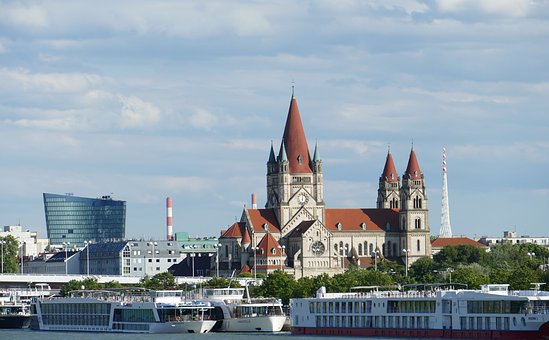
Mr Weiss, Vienna is among the most successful cities worldwide where quality of life, infrastructure and innovation are concerned. In the same time the City of Vienna is facing challenging times ahead. How is Smart City Wien managing to respond to the urban challenges?
With the Smart City Wien framework strategy, Vienna is charting its course towards becoming a “smart city” when urban challenges like urbanisation, climate change, digitalization, population growth exist. This is a course that differs from the strategies of other cities in one key aspect: for Vienna, the integration of the social component into all areas is an essential element of its framework strategy. Climate-related and ecological objectives and the improvement of the everyday realities of its citizens are assigned the same importance in Vienna. Cities are smart if all people living in them have access to the same degree of participation.
The Viennese smart city approach is based on sparing resource use in order to massively reduce CO2 emissions. At the same time, Smart City Wien means to uphold and further increase Vienna’s high quality of life and social participation. Ultimately, Smart City Wien stands for change based on innovation, active organisation and, where necessary, the development of new forms of public and private service delivery. The present Smart City Wien framework strategy is directed at all target groups of the city: Vienna’s citizens, enterprises, non-profit institutions and, last but not least, the public sector itself. The strategy and the actions deriving from it are moreover to deploy a strong external effect: Vienna positions itself as a responsible and impulse-generating metropolis in Europe and in the world at large.
One of the key goals of Smart City Wien is to offer optimum quality of life combined with highest possible resource preservation for all citizens. What innovative solutions are you trying to achieve this aim through?
Concerning the implementation of Smart City projects our holistic approach is important for us as a city administration. Smart City is not a topic only for the CIO but a topic for all the thematic departments, and the strategic process is especially led by our planning director supported by all the relevant actors. So, for the implementation of smart projects broad cooperation within the administration but also with external partners is essential. And furthermore, it is about innovative thinking concerning leading and decision-making processes within the city administration.
Some examples for innovative projects saving CO2 emissions and increasing the quality of day-to-day life are, if interesting:
One project on the small level, like a neighbourhood-area, concerning mobility is “Grätzlräder”. These are cargo bikes that are owned by restaurants, shops and companies who lend them to the Viennese population free of charge. The project was part-financed from the City of Vienna cargo bike funding scheme. The Grätzlrad bikes let you take care of larger deliveries by bike rather than by car. The local cargo bikes are very popular in Vienna and are in steady demand.
Another offer is Citybike. This is a service from the City of Vienna and Gewista for mobile Viennese citizens as well as for visitors. Citybike is, as the name implies, an inner-city means of transport for covering short distances. Since the stations are often situated in the immediate vicinity of underground or tram stations, they also create a logical link with the public transportation network. The 1,500 bicycles can be borrowed at each of the 120 bike stations and parked at any station after the journey has been completed. The first hour of each ride is free. Every year, more than 3.6 million kilometres of the more than 800,000 registered users are covered.
One of our showcase projects in the field of private participation is the Citizens’ Solar Power Plant by the city-owned energy provider Wien Energie. By investing in community-funded solar power plants, Viennese citizens have the opportunity to participate in the development of renewable energies. Since May 2012, more than 6,000 Viennese citizens have contributed to the development of renewable power within the city. Wien Energie has realised 24 solar energy projects and 4 wind turbines. The 26,000 panels of the solar power plants generate a total of approximately 6.8 megawatt-peak (MWp). The energy is fed into the Vienna power grid and provides solar power for approximately 3,000 local households.
In the sector of business participation and cooperation between city administration and companies DigitalCity.Wien has to be mentioned. This is a distinct type of collaboration between Vienna´s IT industry and the municipality, managed by our Smart City Agency at Urban Innovation Vienna. There of course, varied interplays and interdependencies between actors and concepts with emphasis on Smart City and Digitization need to be thoroughly managed and cooperation is fostered on topics like education, generation 65+, women in IT, blockchain, IoT, artificial intelligence etc.
Another project is “Smart Inspection”: Technical inspections make an important contribution to the sustainable operation and the efficiency of technical installations. For the visual inspection of those installations, drones are very welcome as they can reduce the number and the duration of downtimes.
In the field of drone maintenance Wien Energie is cooperating with the start-ups Skyability and Birds.ai. The service developed in 2017 from the first Innovation Challenge of Wien Energie and today is a fully-fledged business model. The smart drones are used for wind farms, photovoltaic systems, for the maintenance of district heating pipes and industrial chimneys.
The process is relatively similar across all applications: During maintenance, images are collected using RGB and thermography cameras and can be tracked live. Subsequently, the data is analysed with the support of artificial intelligence and possible damages can be identified. The data is archived in a database in order to serve as a reference for later and other inspections. Changes on the surface and inside of e.g. photovoltaic panels, can thus be detected, documented and classified over longer periods of time. Within the city drones are used for the maintenance of district heating pipes. The thermography cameras detect leakages and thus unnecessary excavations can be avoided. This saves effort, costs and annoyance – if the roads would have to be closed for example.
Another important field is open data policy: The City of Vienna has committed itself to the concept of Open Government Data – an open and transparent system that makes city data available to the public for their further use. The city administration has thus decided to open its data records to the population, businesses and the scientific community. Relevant data range from statistics and geographic data or traffic and transport to economic figures. Personal data is strictly excluded from the Open Data concept. The main prerequisite for data to be included is their machine readability in open formats.
Open and freely accessible data allows for a broad and democratic exchange of knowledge, thus facilitating the dialogue between local citizens and the administrative authority. As the open data improves participation and communication, it is therefore conducive to innovation and development.
TheMayor.eu has presented a number of the most successful projects of Smart City Wien. Could you describe the project that you and your team dream to realize?
UIV´s Smart City Agency department is working for the City of Vienna under a service contract. As coordinator, innovation broker and change agency the team supports various municipal efforts to reach Vienna´s Smart City goals eager to facilitate the city´s successful transformation. Therefore, the Smart City Agency team collaborates with multiple municipal departments and with stakeholders from science, business and civil society alike. It aims to develop a collaboration platform available to all players and innovators in the field.
For us the most interesting projects would be involving citizens and other cooperation partners, changing behavior within involved parties and being communicated to the residents nearby. For example, this might be projects – not regarding feasibility and budget now – like putting photovoltaic systems on each, really each building. Or another one would be to make public transport free of charge, so that really everyone is able to use it, especially for residents coming to work to Vienna from the surroundings. Another idea would be to be part of each school class in Vienna one time a year for one hour together with company representatives to discuss about future topics also regarding digitalization.
Smart City Wien is also developing projects in collaboration with other EU cities. Could you share more about some of them?
There is a lot of exchange and good relationships between many European cities and Vienna. For example, there are special “Wien Tage” organized by Vienna in many Eastern European cities to make communication and knowledge exchange on topics and projects easier. But it is not only about cooperation on a discussion level, also concrete implementation projects are done in cooperation.
“Smarter Together” for example is the joint Smart City Lighthouse project from Vienna, Munich and Lyon. It is co-funded by the EU as part of the Horizon 2020 research program. In selected districts, technical and social innovations as well as innovative processes contribute to sustainable urban renewal. These contribute to the achievement of the UN climate goals. In addition, impulses for a positive social dynamic are to be set.
More than 30 project partners, from administration, research as well as the industry and SMEs participate in the project. The project comprises a three-year implementation phase (2016-2019) and a subsequent phase of monitoring and evaluation (until 2021), which also includes further deepening the replication of the project. Smarter Together is characterized by its holistic approach. The focus is on effective Smart City measures for climate protection and more urban quality of life – such as integrated building refurbishment, climate-friendly energy systems, e-mobility and innovative data management.
In Vienna alone, more than 40 individual projects are being implemented. These include trend-setting residential refurbishments with innovative energy solutions including an e-car sharing in the housing complex of the BWSG in Hauffgasse, as well as the systematic involvement of the citizens in SIMmobile, Smarter Together’s mobile urban participation lab. It also includes a school extension on the Enkplatz with four new, smart zero-energy gyms, two solar benches and many workshops with the “Science Pool”. An e-cargo-bike can be booked for free at www.graetzlrad.wien. E-bikes are available at the Central Cemetery Zentralfriedhof at gate 2 (Tor 2). Also, a new data platform was created. Industrial logistics are an important topic at Siemens on Leberberg and at the Post. In autumn 2017, more than 6,000 inhabitants of Simmering, mostly kids, took part in the mobility game “Beat the Street”. Smarter Together also holds the thematic leadership in the development of the education quarters Enkplatz and Simmering, which is the expression of a future-oriented dynamic that Smarter Together stands for.
Of central importance are participatory processes as well as knowledge management at all levels (peer to peer and so-called governance learning), because the process experiences are to be rolled out throughout the city and throughout Europe. The development of business models serves to lay the foundations for the replication of the solutions developed in the project, whether within the framework of the city or at European level.
Smarter Together is currently the largest EU subsidized Smart City urban renewal initiative in Vienna.

The number of users of the public transport in Vienna, has risen significantly in the last 10 years. How was this goal achieved?
The modal split share of public transport has risen by ten percentage points since the year 1993. Nowadays 27% use walking, 7% cycling, 39% public transport and 27% private motor traffic to get around in the city.
In 2016 the number of annual passes issued for local public transport in Vienna was over 700,000 for the first time. The reason for this is massive communication work and the price for an annual ticket, set at 365 Euros, one Euro per day, some years ago. Moreover, massive investments in Vienna´s public transport infrastructure improve the City´s ecological track-record steadily. In this regard it is worth considering that the extension of Vienna's subway system builds on widespread support among residents.
How would you evaluate the necessity of a portal that brings together the best practices of European municipalities and aims to keep the citizens informed about the latest smart innovations and projects, such as TheMayor.eu? How can our platform be useful to your agency?
Portals like yours are especially interesting for us as they do a lot of stakeholder communication and residents' communication work by providing information on different projects in many different cities. Furthermore, it allows cooperation and know-how exchange with many other cities and also comparison concerning smart city topics. For us as smart city agency this is crucial in order to be able to provide an overview on strategic developments within the city and all the cooperation partners concerning developments in the technological sector but also abroad. But it is not only important for technological questions, but also for changes in administration culture, in ways of cooperation, etc. A platform like yours is a great communication tool allowing exchange.
What are the long-term goals of Smart City Wien?
The Smart City Wien framework strategy defines goals for the development of a city that assigns priority to, and interlinks, the issues of energy, mobility, buildings and infrastructure. The framework strategy defines one meta goal for 2050: “The best quality of life for all inhabitants of Vienna, while minimizing the consumption of resources. This will be realized through comprehensive innovation.”
Smart City Wien comprises first and foremost the aim of resource preservation. Development and modification processes in the sector of energy, mobility, infrastructure and building management are to dramatically reduce CO2 emissions by 2050. For this purpose, it is essential to make much more efficient use of the required input energy.
The further increase of the quality of life is a second objective that is given as much importance as sparing resource use: in environmental protection or healthcare, Vienna can build on already very high standards. The relevant political decisions were and are significantly derived from the principle of social inclusion. The creation of affordable and attractive housing, the provision of low-cost and resource-conserving mobility and the financing of services of general interest are only a few examples of the implementation of this principle in reality.
To reduce resource use as planned while maintaining or even improving the quality of living, innovation is the third major approach pursued by Vienna. As a smart city, Vienna boasts a dynamic economy, boosts information and communication technologies, assigns very high priority to education and, last but not least, defines itself as a first-rate research hub.
Vienna’s Smart City strategy is characterised by both, an internal effect to render existing plans even more ambitious and to inspire new ideas. At the same time, its external effect is to create an international frame of reference for what is happening here and to generate publicity for Vienna’s aims.
The time horizon of the framework strategy extends to 2050, since the necessary and often fundamental changes in the fields of energy, mobility or construction cannot happen overnight. The thematic arc stretches from the future of Vienna as a hub of research and business to the preservation of all-important social achievements. Concrete methods of application must still be developed in many areas – but the direction is clear: Vienna wants to reduce its resource consumption notably. At the same time, the city intends to continue offering all citizens maximum quality of living, safety and security.
Some of Vienna's main goals are:

The underground rapid transit lines have been under construction for almost two decades due to various project delays

Now you can get your wine in Talence by paying directly in Bitcoin

That’s because the state has to spend money on updating the railway infrastructure rather than subsidizing the cost of the popular pass

Rethinking renewable energy sources for the urban landscape

The examples, compiled by Beyond Fossil Fuels, can inform and inspire communities and entrepreneurs that still feel trepidation at the prospect of energy transition

Now you can get your wine in Talence by paying directly in Bitcoin
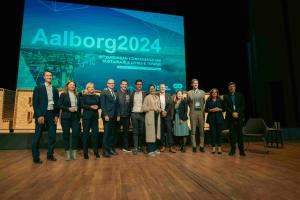
The 10th European Conference on Sustainable Cities and Towns (ESCT) sets the stage for stronger cooperation between the EU, national and local level to fast track Europe's transition to climate neutrality.
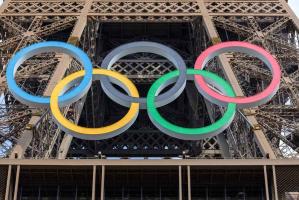
At least, that’s the promise made by the mayor of Paris, Anne Hidalgo

The underground rapid transit lines have been under construction for almost two decades due to various project delays

At least, that’s the promise made by the mayor of Paris, Anne Hidalgo
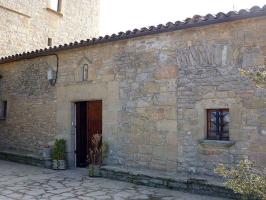
Hostal de Pinós is located in the geographical centre of the autonomous region

Despite its church-y name, the district has long been known as the hangout spot for the artsy crowds
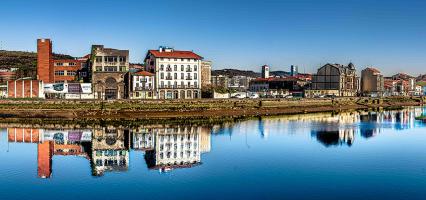
Urban dwellers across the EU are having a say in making their surroundings friendlier to people and the environment.

Forests in the EU can help green the European construction industry and bolster a continent-wide push for architectural improvements.

Apply by 10 November and do your part for the transformation of European public spaces

An interview with the Mayor of a Polish city that seeks to reinvent itself

An interview with the newly elected ICLEI President and Mayor of Malmö
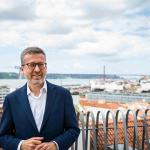
A conversation with the Mayor of Lisbon about the spirit and dimensions of innovation present in the Portuguese capital














